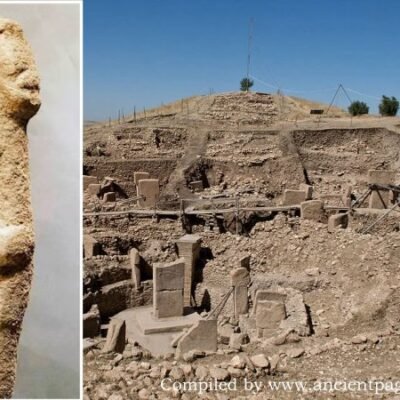Conny Waters – AncientPages.com – Archaeologists may have uncovered the lost capital of the ancient Kingdom of Lyncestis, potentially the birthplace of Queen Eurydice I, Alexander the Great’s grandmother. This enigmatic site has long intrigued researchers.
Credit: Cal Poly Humboldt’s Cultural Resources Facility
For many years, experts believed that ruins in North Macedonia—initially excavated over 15 years ago—were remnants of a military outpost designed to fend off Roman invasions. However, new excavations utilizing advanced technology and the discovery of an ancient coin suggest a much broader narrative.
Researchers from Macedonia’s Institute and Museum–Bitola and Cal Poly Humboldt are revealing an ancient city that predates the Roman Empire by centuries or possibly even millennia. Located near Crnobuki village, this archaeological site known as Gradishte offers insights into Macedonian civilization before Alexander the Great’s era, according to Engin Nasuh, a curator-advisor archaeologist at the National Institute and Museum–Bitola.
“We’re only beginning to scratch the surface of what we can learn about this period,” Nasuh says.
First mentioned in literature in 1966, the site remained an enigma for decades, as noted by Nasuh. Recent archaeological excavations have started to unveil new insights into its size, scope, and influence.
In 2023, modern technologies such as ground-penetrating radar and advanced drone-deployed LIDAR—funded by Cal Poly Humboldt’s College of Arts, Humanities & Social Sciences dean’s office—uncovered a once-thriving city. The acropolis covers at least 7 acres and includes notable structures like a potential Macedonian-style theater and a textile workshop.
This oil lamp has been reconstructed. It was used 2,000 years ago. Credit: Cal Poly Humboldt’s Cultural Resources Facility.
Initially, researchers believed the city was constructed during King Philip V’s reign (221-179 BCE). However, this timeline was revised after discovering a coin minted between 325 and 323 BCE during Alexander the Great’s era. Additional recent findings, such as axes and ceramic vessel fragments, suggest human occupation dates back to the Bronze Age (3,300-1,200 BCE). These discoveries not only illuminate North Macedonia’s history but also enhance our understanding of ancient Western civilization.
Nasuh explains in a press release that the ancient Macedonian state, one of the first modern states in Europe, had an enormous impact on the world. “It is a civilization that played a major role in today’s understanding of the world and the desire to connect different civilizations and cultures.”
Archaeologists have uncovered various artifacts, including stone axes, coins, a clay theater ticket, pottery, game pieces, and textile tools. According to Nasuh, dating items like charcoal and bone places the site between 360 BC and 670 AD. These findings provide concrete evidence of a flourishing city that existed before the rise of Rome. Nick Angeloff, an Anthropology professor and archaeologist at Cal Poly Humboldt, describes this as a unique discovery with significant historical implications.
Angeloff emphasizes the importance of this discovery, highlighting its illumination of the intricate networks and power structures in ancient Macedonia, particularly due to the city’s strategic location along trade routes to Constantinople. It is even possible that notable historical figures, such as Octavian and Agrippa, traversed this area en route to confront Cleopatra and Mark Antony at the Battle of Actium.
Furthermore, Angeloff suggests that this site could be the lost capital city of the of Lyncestis, known as Lyncus—an ancient settlement central to the Upper Macedonian Kingdom since its establishment in the seventh century BCE. It may also be recognized as the birthplace of Queen Eurydice I, grandmother to Alexander the Great, who played a pivotal role in shaping regional politics.
See also: More Archaeology News
Efforts by students, faculty, and researchers from the National Institute and Museum–Bitola alongside Cal Poly Humboldt aim to continue unraveling this ancient city’s history. This ongoing research holds promise for uncovering more about ancient Macedonia’s complex networks and vibrant culture, providing valuable insights into early European state development and their global influence.
Nasuh likens these studies to pieces within a larger mosaic representing early European civilizations. Each study adds another piece, eventually revealing a complete picture through continued research efforts.
Written by Conny Waters – AncientPages.com Staff Writer






